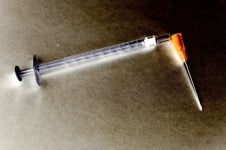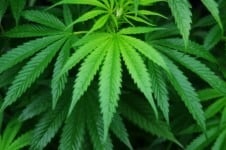What Is A Controlled Dangerous Substance, or CDS, In Maryland?
The substances commonly referred to as “drugs” are defined and formally referred to under Maryland law as controlled dangerous substances. The common acronym used in legal proceedings, charging papers, court documents, and even at trial is “CDS”.

Some materials are deemed contraband under the law. There is no legal purpose justifying the possession of such a substance. Just having the substance in one’s possession is illegal, and criminal. The possession of other materials might be legal, or illegal, depending on whether or not one has a written prescription, is an authorized provider, or received the item from an authorized provider. For example, it might be legal for a pharmacists to handle a given substance, in a given setting, whereas it would be a crime for someone who was not a pharmacists to handle that same substance. Under section 5-101 of the Criminal Law Article, a controlled dangerous substance is a drug or substance appearing on certain lists promulgated by the federal and state governments, called “schedules” [or an immediate precursor to a drug or substance listed on a schedule, which meets certain other statutory requirements.] Any material that is designated as a scheduled controlled dangerous substance by the federal government is one under state law as well. [Unless the State of Maryland has objected to the designation], As Attorney Eric T. Kirk will tell you.
Scheduled substances are broken down into one of five categories based on several factors. “Drugs, substances, and certain chemicals used to make drugs are classified into five (5) distinct categories or schedules depending upon the drug’s acceptable medical use and the drug’s abuse or dependency potential. The abuse rate is a determinate factor in the scheduling of the drug; for example, Schedule I drugs have a high potential for abuse and the potential to create severe psychological and/or physical dependence. Schedule V drugs represent the least potential for abuse.” https://www.dea.gov/druginfo/ds.shtml
“Schedule I drugs, substances, or chemicals are defined as drugs with no currently accepted medical use and a high potential for abuse.” Id. Examples of schedule I substances are:
- Heroin
- LSD
- Marijuana*
- Ecstasy
* Although Marijuana is still listed as a Schedule 1 controlled substance by the DEA, the legality of the drug is evolving rapidly at the State level. Indeed, Maryland as acted to decriminalize the possession of relatively small amounts.
For more, visit:
Is Marijuana Legal In Maryland? The Possession Of Less Than 10 Grams/ “Personal Use” Exception.
Is Medical Marijuana Legal in Maryland?
“Schedule II drugs, substances, or chemicals are defined as drugs with a high potential for abuse, with use potentially leading to severe psychological or physical dependence.” Id. Examples of schedule II substances are:
- Vicodin
- Cocaine
- Methamphetamine
- methadone,
- hydromorphone (Deluded),
- meperidine (Demerol)
- oxycodone (OxyContin)
- fentanyl
- Adderall,
- and Ritalin
- Schedule III drugs include:
- Tylenol with codeine
- anabolic steroids
- testosterone. Id.
Some examples of Schedule IV drugs are:
- Xanax
- Soma
- Darvon
- Darvocet
- Valium
- Ativan
- Ambien
- Tramadol Id.
“Schedule V drugs…. are preparations containing limited quantities of certain narcotics. Schedule V drugs are generally used for antidiarrheal, antitussive, and analgesic purposes.” Id.
-All sources https://www.dea.gov/druginfo/ds.shtml

Analogues are treated the same as the banned substances themselves. A controlled dangerous substance analogue is a drug with “a chemical structure substantially similar to the chemical structure of a controlled dangerous substance listed in Schedule I or Schedule II; and that has a stimulant, depressant, or hallucinogenic effect on the central nervous system that is substantially similar to or greater than the stimulant, depressant, or hallucinogenic effect on the central nervous system of a controlled dangerous substance” Section 5-402 of the Criminal Law Article.
Alphabetical Listing of Controlled Dangerous Substances.



